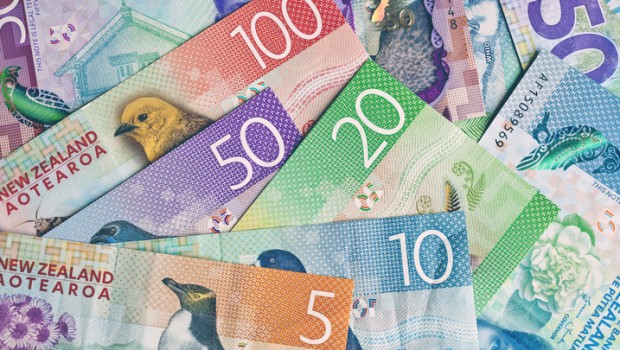Asia report: Markets weaker as RBNZ hikes interest rates

Markets in Asia were in the red as they closed on Wednesday, as New Zealand’s central bank pulled the trigger on hiking interest rates for the first time in seven years.
In Japan, the Nikkei 225 was down 1.05% at 27,528.87, as the yen weakened 0.04% to last trade at JPY 111.51.
It was a negative day for the benchmark’s major components, with automation specialist Fanuc down 1.56%, fashion firm Fast Retailing losing 3.1%, and technology conglomerate SoftBank Group 2.07% weaker.
The broader Topix index was 0.3% weaker by the end of trading in Tokyo, closing at 1,941.91.
Markets on the mainland were still closed for the ‘Golden Week’ holiday in China, although analysts were using the quieter period to take a good look at the growth prospects for the People’s Republic.
Oxford Economics cut its China growth forecast for the fourth quarter on Wednesday, to a year-on-year rate of 3.6% from a previous 5%, and for 2022 to 5.4% from 5.8%.
That, it said, was despite its expectation of a shift in economic policy in the fourth quarter of the year to support growth.
“While Evergrande’s problems are unlikely to trigger a Lehman moment, they will aggravate the ongoing property sector slowdown,” said Oxford Economics head of Asia economics Louis Kuijs.
“Given the large overall footprint of the residential real estate sector via ‘backward linkages’ to sectors such as steel, its slowdown will weigh significantly on overall economic growth.
“Recent Covid outbreaks are also still weighing on domestic spending and this pressure is likely to linger for longer.”
Moreover, Kuijs said firms in many parts of the country were facing electricity shortages or production cuts, largely caused by a strict implementation of climate and safety targets by local governments.
“We expect senior policymakers to start stressing growth and to call for the pursuit of climate targets on a more measured timeline,” Louis Kuijs explained.
“As a result, we expect the supply side constraints to be eased in coming months.
“Even so, however, we expect China's GDP growth will slow significantly in the fourth quarter, largely due to the real estate weakness.”
That, he said, would lead to an easing of the policy stance towards more support for growth.
South Korea’s Kospi was off 1.82% at 2,908.31, while the Hang Seng Index in Hong Kong slipped 0.52% to 23,966.49.
The blue-chip technology stocks were on the back foot in Seoul, with Samsung Electronics down 1.25%, and SK Hynix losing 1.43%.
Oil prices were lower at the end of the Asian day, with Brent crude last down 0.23% at $82.37 per barrel, and West Texas Intermediate losing 0.33% to $78.67.
In Australia, the S&P/ASX 200 was down 0.58% at 7,206.50, with the hefty financials subindex losing 0.88% in Sydney.
The big four banks were in the red in the sunburnt country, with Australia and New Zealand Banking Group down 1.08%, Commonwealth Bank of Australia off 1.97%, National Australia Bank losing 0.83%, and Westpac Banking Corporation 0.62% weaker.
Across the Tasman Sea, New Zealand’s S&P/NZX 50 was 0.25% weaker at 13,166.44, after the Reserve Bank of New Zealand hiked its official cash rate to 0.5%, from the previous record low of 0.25%, in line with market expectations.
The bank last raised interest rates in July 2014, when the official cash rate was raised to 3.5% from 3.25%.
It joins Norway and South Korea as being among the first developed economies to raise interest rates in the wake of the emergency settings applied during the Covid-19 pandemic.
The move saw the yield on the two-year New Zealand government bond jump more than 20 basis points almost immediately, to breach the 1% level.
In its statement, the Reserve Bank said it was planning a “measured increase” in the official cash rate to reach an average of 2% by the September 2023 quarter.
“Investors must remain vigilant over upcoming major risks, including stagflation fears stemming from surging commodity prices that fuel runaway inflation and erode the global economic recovery,” said Exinity chief market analyst Han Tan.
“Germany’s steeper-than-expected contraction in August factory orders is only amplifying concerns that supply bottlenecks could persist and continue to ramp up consumer prices.
“Inflationary pressures that last for longer than expected could hasten policy tightening by major central banks, with the RBNZ being the latest to hike interest rates while the Bank of England is open to such a move before the end of 2021.”
The down under dollars were both weaker against the greenback, with the Aussie last off 0.82% at AUD 1.3831, and the Kiwi retreating 1.13% to NZD 1.4528.